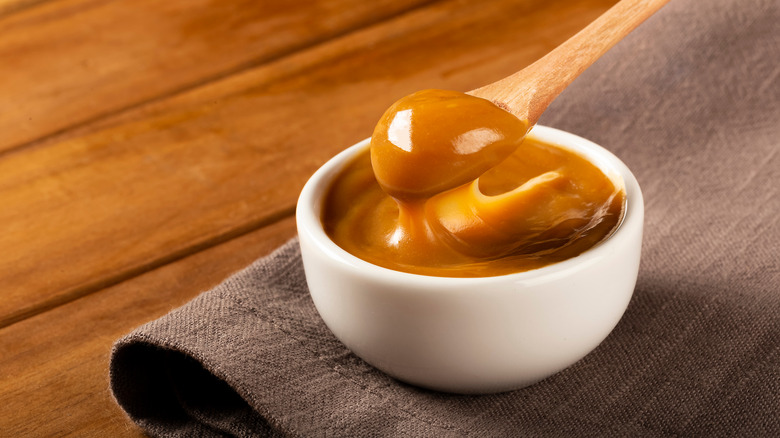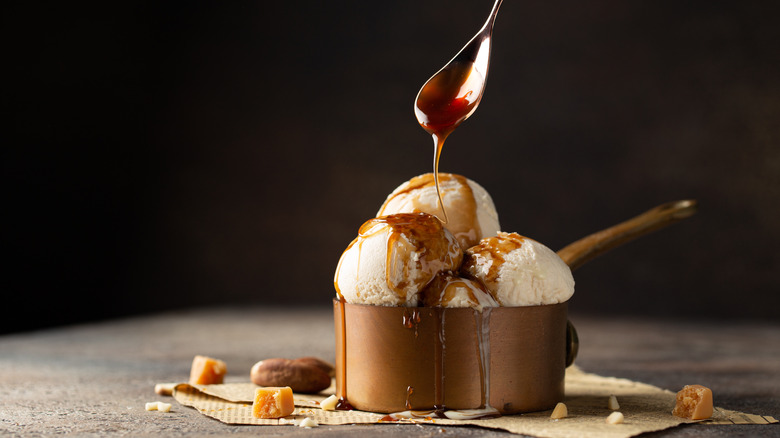The Biggest Difference Between Dulce De Leche And Cajeta
The name dulce de leche — literally "sweet from milk" — tells you all you need to know about the Latin American confection. Milk and sugar (or, for a speedier version, sweetened condensed milk) is slow-cooked until it develops a rich, almost nutty sweetness. Dulce de leche is a classic across South America, particularly in Argentina, where it's slathered between two cookies in the classic dessert alfajores.
If you're in Mexico, you might also see a rich-brown, gooey sauce on your dessert. Despite being similar in appearance and even preparation, this is probably not dulce de leche: It's cajeta. And although it's also slow-cooked with a stick-to-your-teeth texture, the flavor is different.
The primary difference between the two is milk type. Dulce de leche is made with cow's milk, and cajeta is made with goat's milk.
Just as brie and chevre cheeses have similar characteristics like fattiness and spreadability but totally divergent flavors, dulce de leche has a buttery toffee flavor and typically lacks cajeta's nuanced, savory undertones. Not only are dulce de leche and cajeta different from each other, but they're also different from caramel.
How are dulce de leche and cajeta made differently from caramel?
Caramel is often used as a catch-all name for a variety of sugary sweets. In fact, the term refers to a specific culinary process that sets true caramel apart from other alternatives like cajeta and dulce de leche, which is easy to make at home.
When sucrose, the molecule in raw sugar, reaches temperatures of about 320 degrees Fahrenheit, it begins thermal decomposition and breaks down, producing new compounds with toasty and cooked flavors. This process doesn't happen at lower temps: Marshmallows, for example, are made with sugar heated to 250 degrees F, after it melts but before it begins to caramelize.
Both dulce de leche and cajeta are cooked at temperatures that rarely exceed 212 degrees F. Instead of undergoing true caramelization, milk proteins and sugars begin the Maillard reaction, a complex cascade that's responsible for toasty, nutty flavors of everything from coffee to roasted vegetables. In particular, the milk sugar lactose and the amino acid lysine begin to brown, producing a rich malty flavor. Plus, water evaporates and produces an increasingly firm texture. Caramelization solely affects the sugar, or carbohydrates, but for the Maillard reaction to occur protein must be involved as well.
You can see both processes separately in an unlikely dish: Caramelized onions. Early in the process, as your onions begin to brown, sweat, and release an intoxicating aroma, the Maillard reaction is at work — and this is as far as dulce de leche or cajeta go. After a half hour or so, when the onions take on a jammy texture and roasty depth of flavor, true caramelization has begun.

